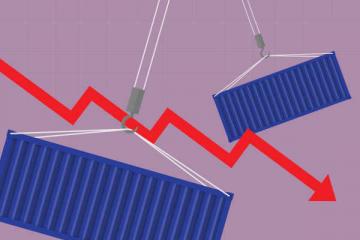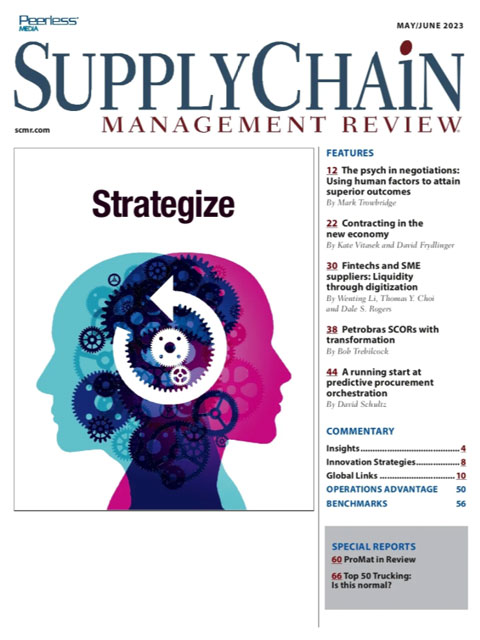Sorry, but your login has failed. Please recheck your login information and resubmit. If your subscription has expired, renew here.
May-June 2023
If you were dropped onto this planet and landed at McCormick Place in the heart of Chicago in the middle of March, you would probably conclude that planet Earth had been overrun by robots. Everywhere you turned on the ProMat conference floor, there was a robot lifting something, putting something away, or carrying something to another location. But, despite a conference hall overrun by technology, the on-the-ground reality is a bit different. Not so long ago, commercial real estate firm Prologis estimated the number of facilities with any type of automation at about 10%. But that is changing—quickly. A recent report from JLL found that one-in-two… Browse this issue archive.Need Help? Contact customer service 847-559-7581 More options
If you were dropped onto this planet and landed at McCormick Place in the heart of Chicago in the middle of March, you would probably conclude that planet Earth had been overrun by robots. Everywhere you turned on the ProMat conference floor, there was a robot lifting something, putting something away, or carrying something to another location.
But, despite a conference hall overrun by technology, the on-the-ground reality is a bit different. Not so long ago, commercial real estate firm Prologis estimated the number of facilities with any type of automation at about 10%. But that is changing—quickly. A recent report from JLL found that one-in-two logistics and industrial occupiers plan to increase their use of automation technologies such as automated storage and retrieval systems by 25% between now and 2030.
“The standard lease term for logistics facilities in the region is generally between three years and five years, which makes it too short to recoup CapEx on many new solutions,” says Peter Guevarra, director of research consultancy for Asia Pacific for JLL, in explaining the slow adoption to date. And yet, this year’s ProMat looked as though it was a robotic takeover.
“Everything has a place,” Ed Romaine, vice president of marketing & business development for Conveyco Technologies, said during his presentation on autonomous mobile robots at ProMat.
But not everyone completely agrees. Thomas Jorgensen, president & CEO of Green Worldwide Shipping, believes that despite the tech advances, people will still drive the supply chain car.
“While societal advancement is largely tied to technological advancement, the true measure of how great the resulting impact is will be anchored in how we integrate that technology into our existing lives and processes as well as how we as a society and community respond and adapt to a new order,” he wrote in a recent Forbes Business Council post.
Jorgensen went on. “Even with all of the benefits of automation, people will drive the future of the T&L industry—not technology. While technology will continue to increase efficiencies and cost savings, it’s going to be the people wielding this technology who will truly shape the trends in the years to come.”
So, while you will continue to see great advancements in technology, remember that the future will not be possible without the people that are driving the future.
Many of those people will be on hand when Peerless Media hosts its NextGen Supply Chain Conference on Oct. 16-18 at the Chicago Athletic Association in Chicago. Featuring top executives highlighting current and coming supply chain technologies and processes, the show is a must attend.
Register at nextgensupplychainconference.com or go to scmr.com and click the “events” tab. I look forward to seeing you there.
SC
MR
Sorry, but your login has failed. Please recheck your login information and resubmit. If your subscription has expired, renew here.
May-June 2023
If you were dropped onto this planet and landed at McCormick Place in the heart of Chicago in the middle of March, you would probably conclude that planet Earth had been overrun by robots. Everywhere you turned on the… Browse this issue archive. Access your online digital edition. Download a PDF file of the May-June 2023 issue.If you were dropped onto this planet and landed at McCormick Place in the heart of Chicago in the middle of March, you would probably conclude that planet Earth had been overrun by robots. Everywhere you turned on the ProMat conference floor, there was a robot lifting something, putting something away, or carrying something to another location.
But, despite a conference hall overrun by technology, the on-the-ground reality is a bit different. Not so long ago, commercial real estate firm Prologis estimated the number of facilities with any type of automation at about 10%. But that is changing—quickly. A recent report from JLL found that one-in-two logistics and industrial occupiers plan to increase their use of automation technologies such as automated storage and retrieval systems by 25% between now and 2030.
“The standard lease term for logistics facilities in the region is generally between three years and five years, which makes it too short to recoup CapEx on many new solutions,” says Peter Guevarra, director of research consultancy for Asia Pacific for JLL, in explaining the slow adoption to date. And yet, this year’s ProMat looked as though it was a robotic takeover.
“Everything has a place,” Ed Romaine, vice president of marketing & business development for Conveyco Technologies, said during his presentation on autonomous mobile robots at ProMat.
But not everyone completely agrees. Thomas Jorgensen, president & CEO of Green Worldwide Shipping, believes that despite the tech advances, people will still drive the supply chain car.
“While societal advancement is largely tied to technological advancement, the true measure of how great the resulting impact is will be anchored in how we integrate that technology into our existing lives and processes as well as how we as a society and community respond and adapt to a new order,” he wrote in a recent Forbes Business Council post.
Jorgensen went on. “Even with all of the benefits of automation, people will drive the future of the T&L industry—not technology. While technology will continue to increase efficiencies and cost savings, it’s going to be the people wielding this technology who will truly shape the trends in the years to come.”
So, while you will continue to see great advancements in technology, remember that the future will not be possible without the people that are driving the future.
Many of those people will be on hand when Peerless Media hosts its NextGen Supply Chain Conference on Oct. 16-18 at the Chicago Athletic Association in Chicago. Featuring top executives highlighting current and coming supply chain technologies and processes, the show is a must attend.
Register at nextgensupplychainconference.com or go to scmr.com and click the “events” tab. I look forward to seeing you there.
SC
MR

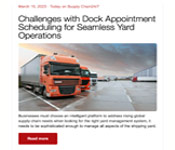
Latest Supply Chain News
Latest Podcast
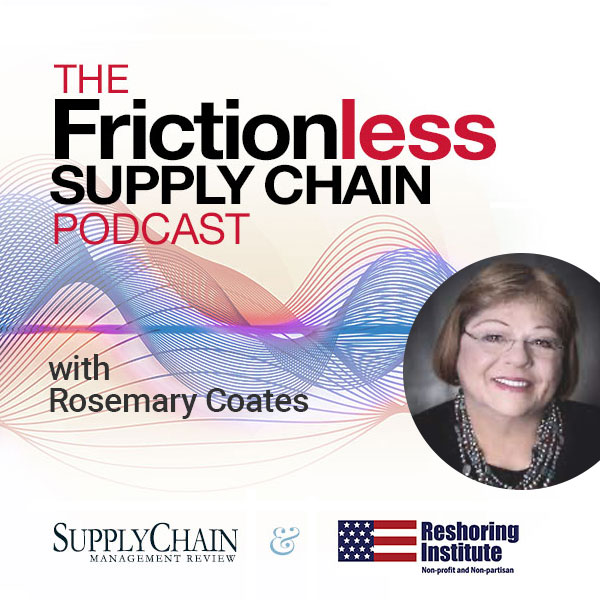
 Explore
Explore
Business Management News
- Strategic cost savings differ from cutting costs
- Planning fatigue may be settling in
- Inflation, economic worries among top supply chain concerns for SMBs
- April Services PMI declines following 15 months of growth, reports ISM
- Attacking stubborn COGS inflation with Digital Design-and-Source-to-Value
- Joseph Esteves named CEO of SGS Maine Pointe
- More Business Management
Latest Business Management Resources
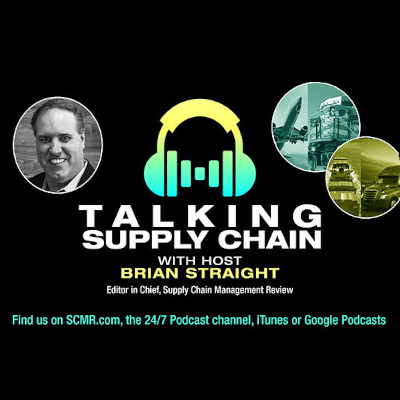
Subscribe
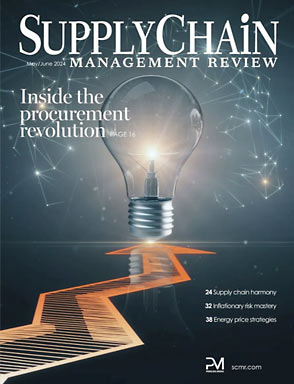
Supply Chain Management Review delivers the best industry content.
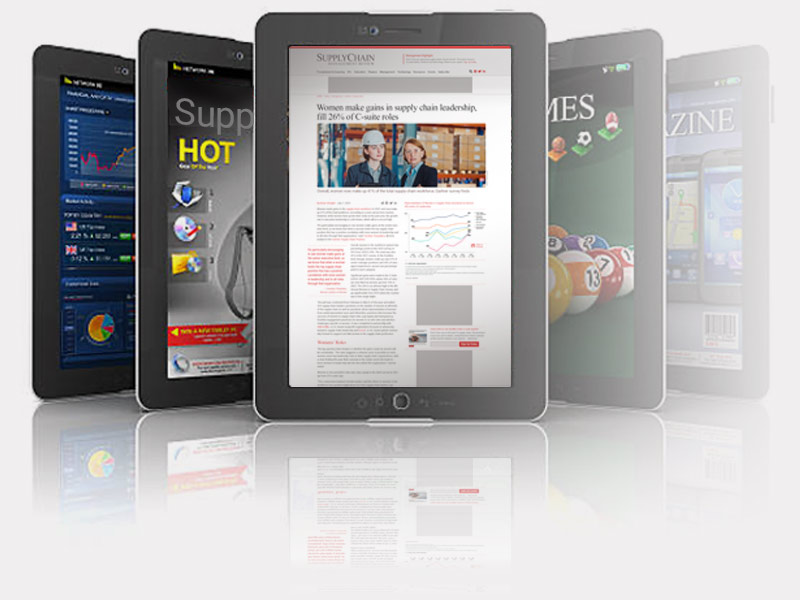
Editors’ Picks


